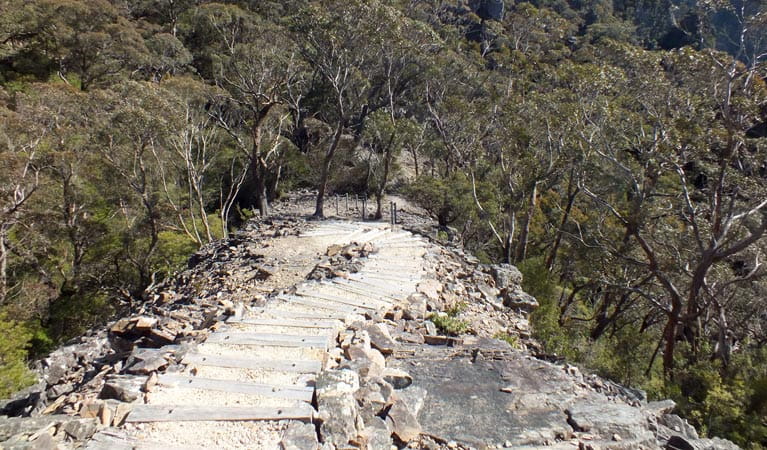Kanangra Waterfall walk
Kanangra-Boyd National Park
Overview
Kanangra Waterfall walk in Kanangra-Boyd National Park offers marvellous views of the cascading water at Kanangra and Kalang Falls.
- Distance
- 1.6km one-way
- Time suggested
- 30min
- Grade
- Medium
- What to
bring - Drinking water, hat, sunscreen
- Please note
- Remember to take your binoculars if you want to bird watch.
Kanangra Waterfall walk takes visitors along an exposed spine of ancient rocks and past views of Kanangra Deep, Kanangra Walls and Thurat Spires. From the Kanangra Walls carpark, follow the lookout walk before diverging off on to Waterfall walk's path.
In the depths of the gorge, you may be able to spot one of the country’s few native deciduous trees, the Australian red cedar – it has new red growth in late spring. If you time your walk for either early in the morning or late afternoon, you’ll also be rewarded by the sight of many small birds, such as the flame robin, which inhabit the heath and forest.
Take a virtual tour of Waterfall walk captured with Google Street View Trekker.
Map
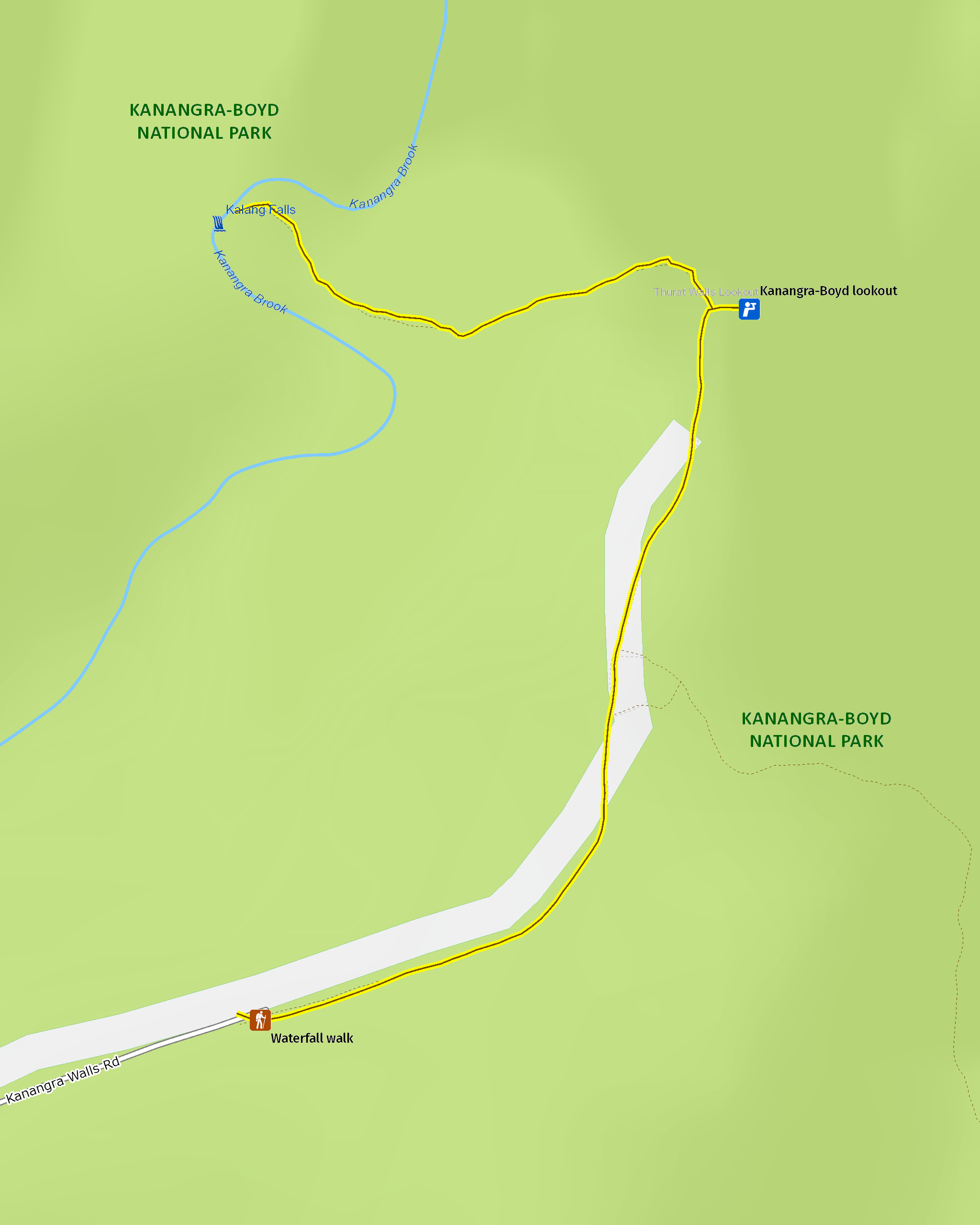
Map
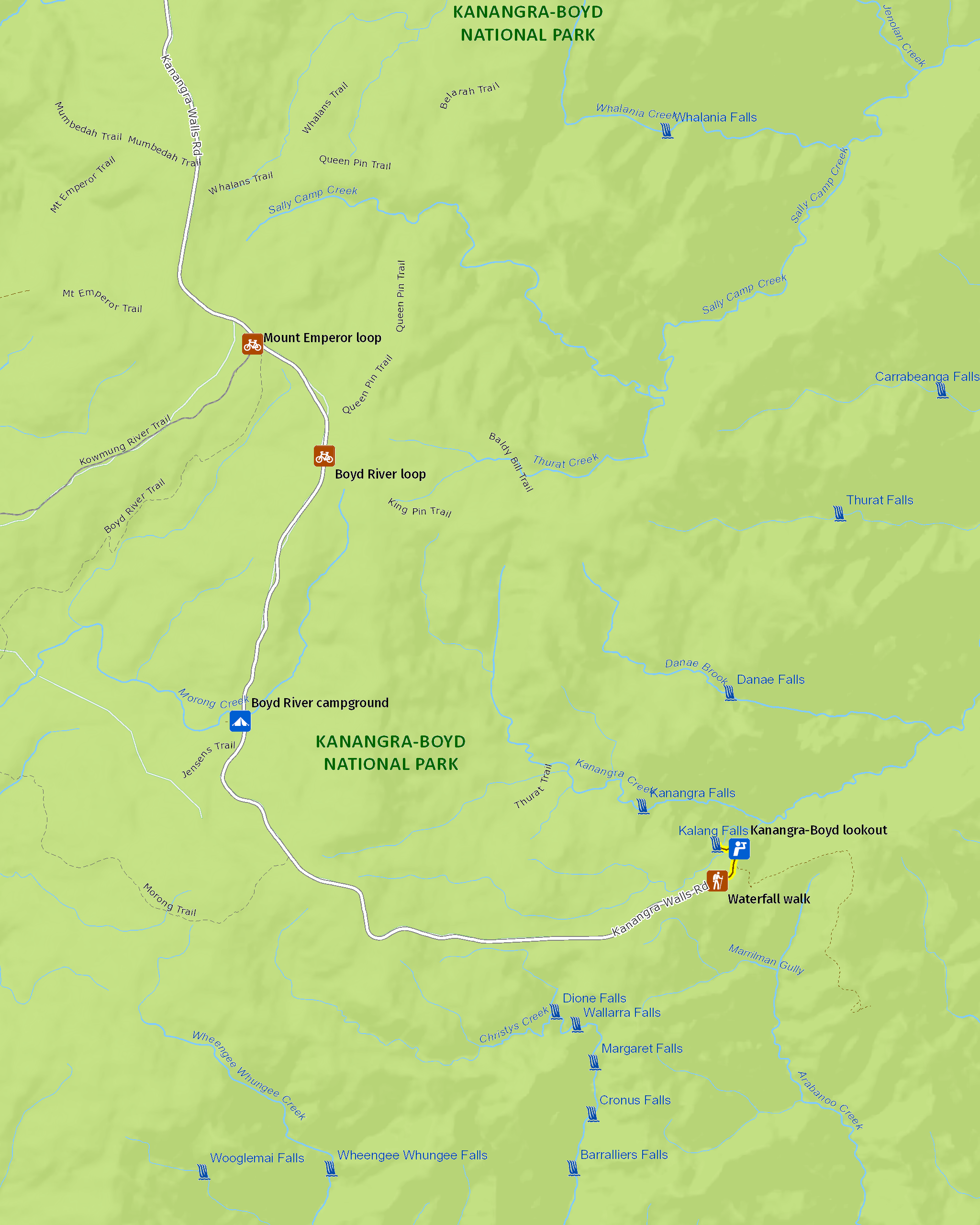
Map legend

Local alerts
For the latest updates on fires, closures and other alerts in this area, see https://www.nationalparks.nsw.gov.au/things-to-do/walking-tracks/kanangra-waterfall-walk/local-alerts
General enquiries
- National Parks Contact Centre
- 7am to 7pm daily
- 1300 072 757 (13000 PARKS) for the cost of a local call within Australia excluding mobiles
- parks.info@environment.nsw.gov.au
Park info
- in Kanangra-Boyd National Park in the Sydney and surrounds and Country NSW regions
Kanangra-Boyd is always open, but may have to close at times due to poor weather or fire danger.
Visitor info
All the practical information you need to know about Kanangra Waterfall walk.
Getting there and parking
Waterfall walk is in the Kanangra Walls precinct of Kanangra-Boyd National Park. To get there:
- From Oberon: Turn off the main street onto Ross Street at the National Australia Bank and then follow the signs to Jenolan Caves and Kanangra-Boyd National Park. A 25-minute drive will take you to the park entrance. Follow this road to Kanangra Walls car park.
Parking
Parking is available, including several designated disabled spots.
Best times to visit
There are lots of great things waiting for you in Kanangra-Boyd National Park. Here are some of the highlights.
Spring
A beautiful time of year to enjoy hiking and mountain biking; the temperature isn't too hot. The Kanangra Classic, a weekend of outdoor adventure, takes place at Jensens Farm near Boyd River Campground in October. The event includes mountain bike enduros, a social ride and an ultramarathon.
Summer
Take the family camping in the mountains. This is best time of year for canyoning, as well as spotting some of the park's wildlife including kangaroos, echidnas, wombats and lyrebirds.
Winter
With cold temperatures during these months, including the possibility of snow, it's best to walk and mountain bike as part of a day trip. You'll be rewarded with the yellow Kanangra wattle beginning to bloom in late winter.
Weather, temperature and rainfall
Summer temperature
Average
10°C and 23°C
Highest recorded
34.5°C
Winter temperature
Average
-2ºC and 10ºC
Lowest recorded
-10.1ºC
Rainfall
Wettest month
June
Driest month
March
The area’s highest recorded rainfall in one day
200.3mm
Facilities
You'll need to bring your own drinking water.
Maps and downloads
Prohibited
Pets
Pets and domestic animals (other than certified assistance animals) are not permitted. Find out which regional parks allow dog walking and see the pets in parks policy for more information.
Smoking
NSW national parks are no smoking areas.
Learn more
Kanangra Waterfall walk is in Kanangra-Boyd National Park. Here are just some of the reasons why this park is special:
Action adventure
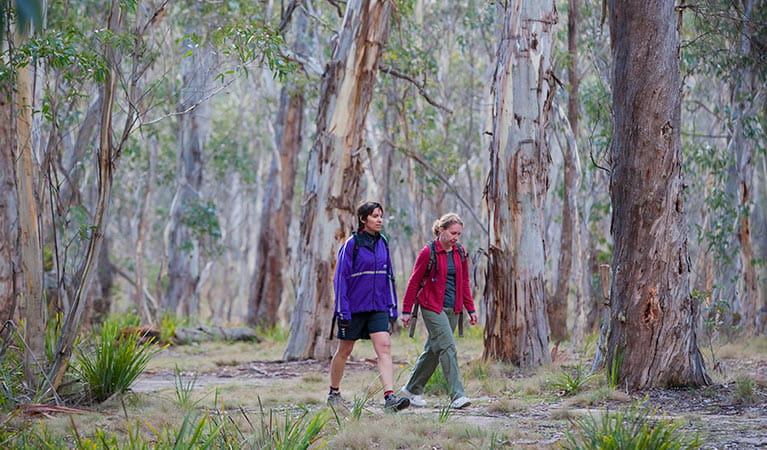
Hardcore hiker? Mad for mountain biking? There's something for whatever level of adventure you desire. Fire trails that wind throughout the park can be explored by 4WD or bicycle. For those who are handy with a map and compass, there's plenty of opportunity for self-reliant bushwalking. There are also marked trails that take in the captivating landscape which are even suitable for the kids. You might even want to throw in a line at Kowmung River to see if you can hook a trout.
- Boyd River loop Take the easy route to peaceful cycling on Boyd River loop, a 21km journey that follows fire trails and roads in Kanangra-Boyd National Park.
- Kanangra-Boyd lookout You can see for miles at Kanangra-Boyd lookout, an easily accessible viewpoint overlooking Kanangra Walls and Mount Cloudmaker.
- Mount Emperor loop A scenic 12.5km ride across the Boyd Plateau, Mount Emperor loop gives mountain bike riders the opportunity to explore some of the lesser-known corners Kanangra-Boyd National Park.
Amazing formations
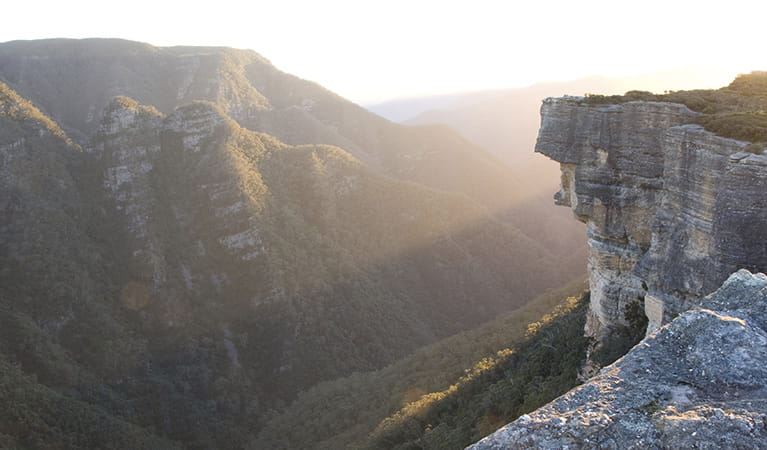
You can see many unique formations in Kanangra-Boyd National Park, including Thurat Spires, Kanangra Walls, Mount Colong, and waterfall systems - Kalang, Kanangara and Morong. The park also features a series of karst landforms that can be explored by those with caving experience.
- Kanangra Waterfall walk Kanangra Waterfall walk in Kanangra-Boyd National Park offers marvellous views of the cascading water at Kanangra and Kalang Falls.
- Kanangra-Boyd lookout You can see for miles at Kanangra-Boyd lookout, an easily accessible viewpoint overlooking Kanangra Walls and Mount Cloudmaker.
Preserving nature for future generations
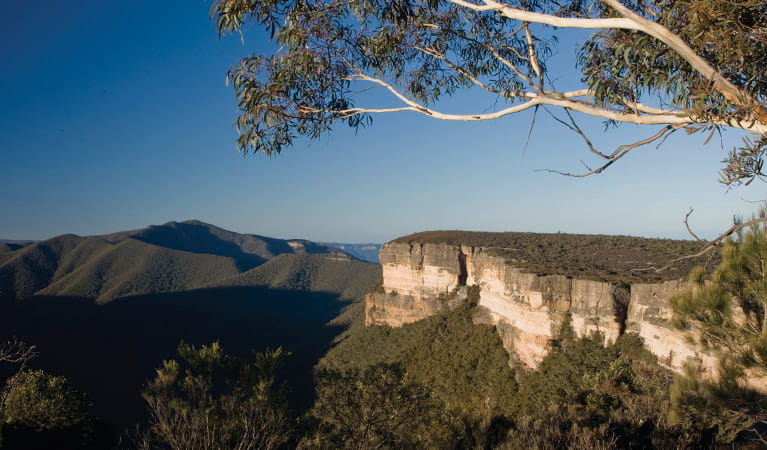
There was a time when Kanangra-Boyd was in danger from logging and the extraction of lime. That all changed after a five-year conservation effort resulted in it being declared part of Greater Blue Mountains Area World Heritage Property in 1972.
Wonderful wilderness
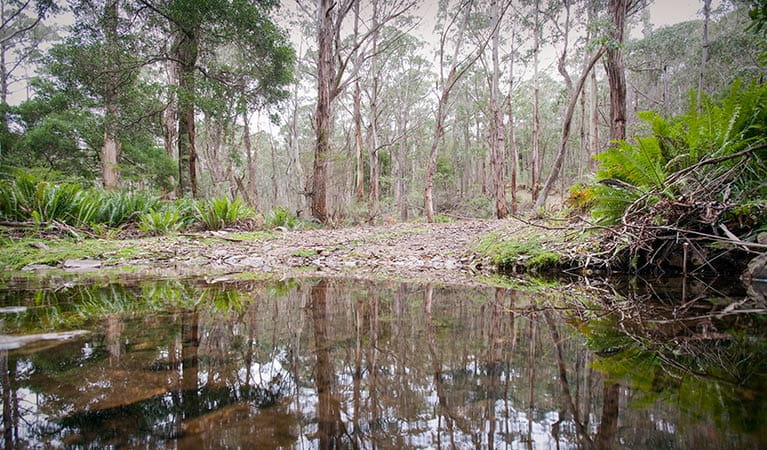
High plateaus and sheltered slopes mean Kanangra-Boyd has a diverse range of plantlife, some of it unique to the national park. Heath and mallee dominate the areas exposed to wind and weather, while tall snow gum forests can also be found in the park. Look for the yellow Kanangra wattle that grows only on the rivers - it flowers from early spring to late winter. The wildlife population is extensive too. Keep your eyes peeled for red-necked wallabies, which thrive in this area. Honeyeaters, wrens and fruit-eating pigeons are just some of the 195 species of birds that can be spotted in the park on a daily basis.
- Kanangra Waterfall walk Kanangra Waterfall walk in Kanangra-Boyd National Park offers marvellous views of the cascading water at Kanangra and Kalang Falls.
- Kanangra-Boyd lookout You can see for miles at Kanangra-Boyd lookout, an easily accessible viewpoint overlooking Kanangra Walls and Mount Cloudmaker.
Plants and animals protected in this park
Animals
-
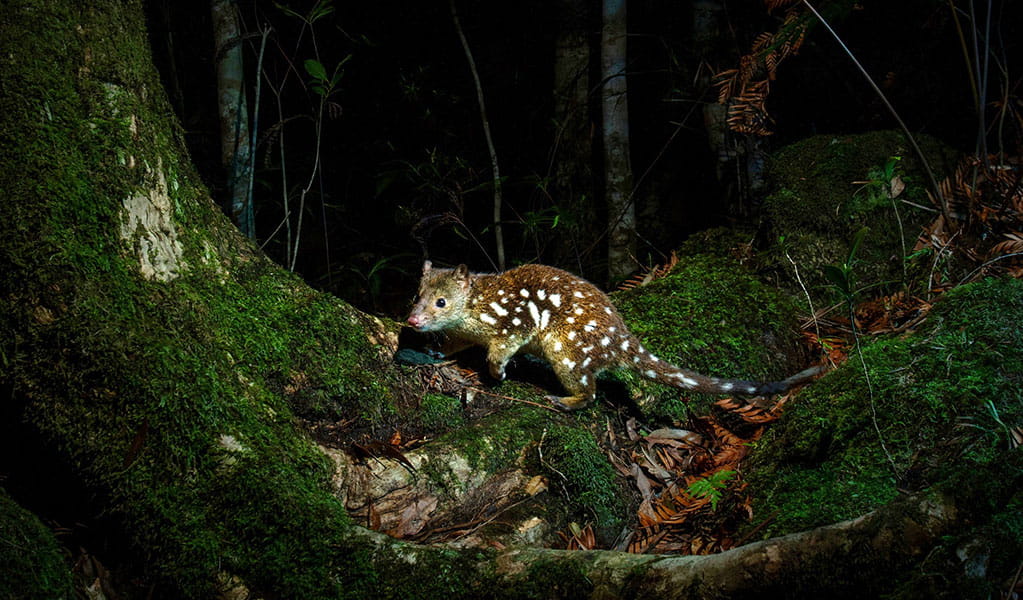
Spotted-tailed quoll (Dasyurus maculatus)
The spotted-tailed quoll is the largest remaining carnivorous marsupial on the Australian mainland. It’s protected as a vulnerable species in NSW.
-
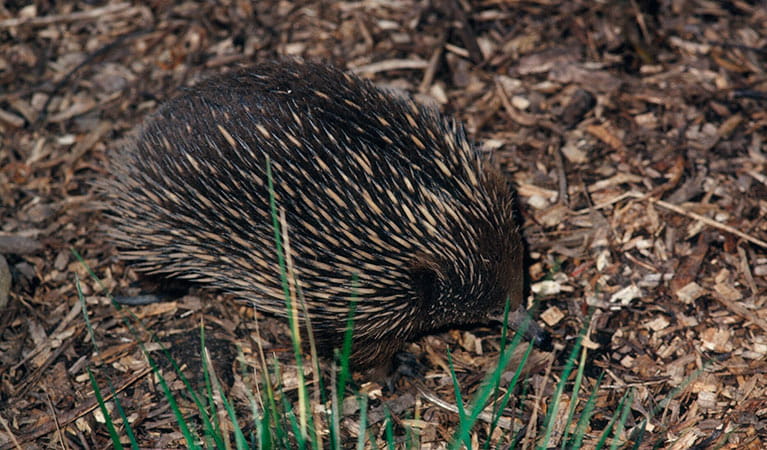
Short-beaked echidna (Tachyglossus aculeatus)
One of only 2 egg-laying mammals in the world, the short-beaked echidna is one of the most widespread of Australian native animals. Covered in spines, or quills, they’re equipped with a keen sense of smell and a tube-like snout which they use to break apart termite mounds in search of ants.
-

Superb lyrebird (Menura novaehollandiae)
With a complex mimicking call and an elaborate courtship dance to match, the superb lyrebird is one of the most spectacular Australian animals. A bird watching must-see, the superb lyrebird can be found in rainforests and wet woodlands across eastern NSW and Victoria.

